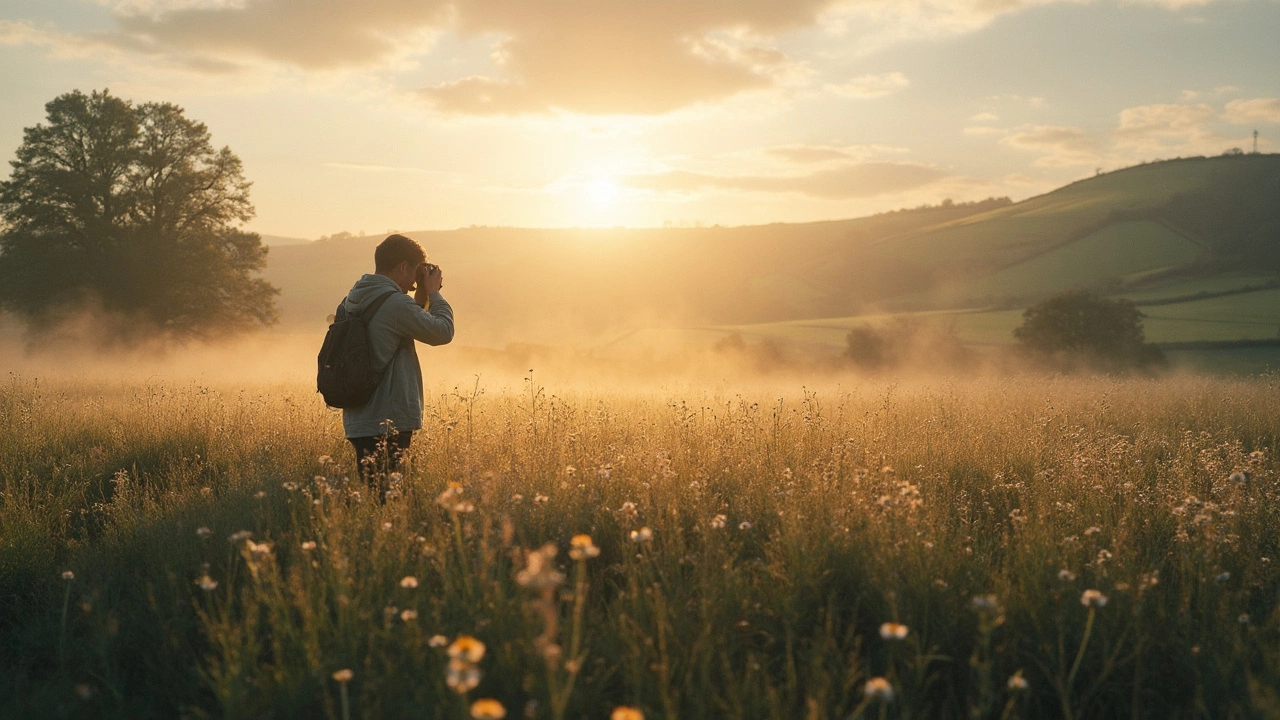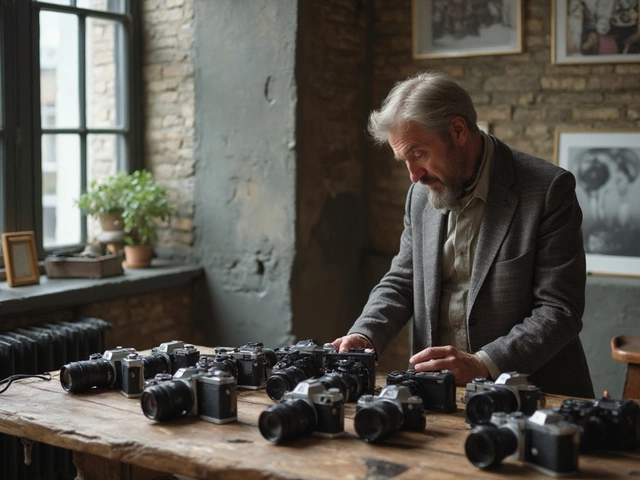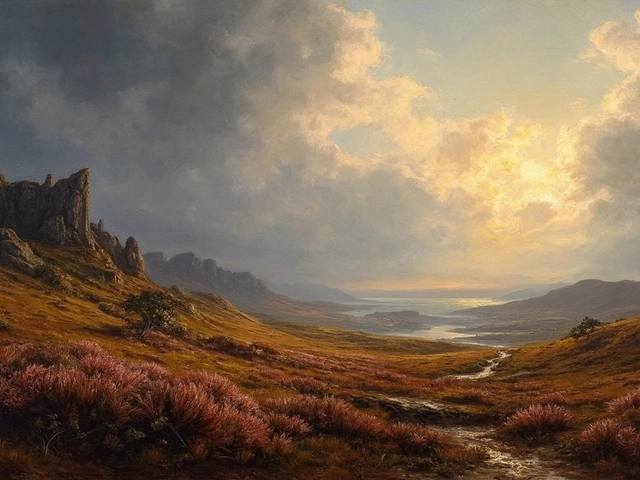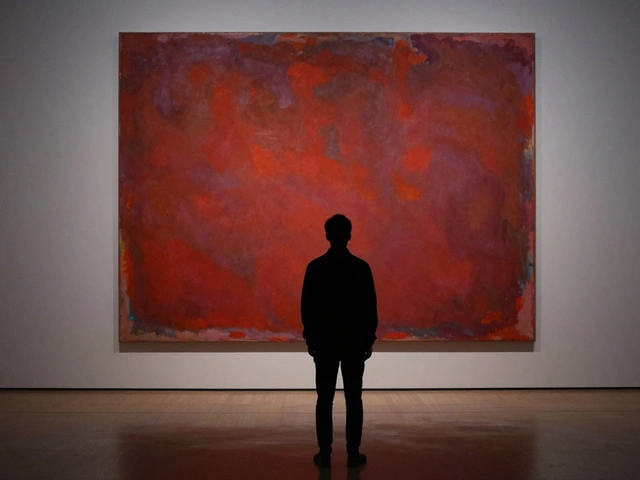If you're wondering what separates fine art photography from other types of photography, you're in for a treat. It's all about using a camera to express creative visions, rather than simply recording reality. Think of it as a cross between photography and painting—an art form that lets photographers play with ideas and emotions through their lens.
At the core, fine art photography is subjective. It’s more about the artist's perception than the subject itself. Photographers in this field often have a distinct style that reflects their interpretation of the world around them. They use the camera as a tool to explore themes, tell stories, or even question societal norms. It’s a medium full of possibility, where imagination is the only limit.
Interested in trying your hand at fine art photography? Start by focusing on what inspires you. Look beyond what's in front of you and think about how you can convey your thoughts or feelings through an image. You might experiment with different techniques or editing styles to achieve the desired effect. Remember, it's about capturing not just what's seen, but what's felt.
- Understanding Fine Art Photography
- Elements of Fine Art Photography
- Techniques and Tips for Capturing Fine Art
- Famous Fine Art Photographers
Understanding Fine Art Photography
Fine art photography, at its heart, is about more than just snapping a picture. It's a way of using a camera to dive deep into personal expression. While some may think of it as simply 'artsy' pictures, it's far more nuanced than that. It's not just about what you see, but how the photographer feels and what they want to communicate through their work.
The Distinctive Nature of Fine Art
Unlike commercial photography, which aims to sell or promote a product, fine art photography is about conveying an idea or emotion. It often blurs the lines between fantasy and reality. The goal is not to document reality but to interpret it, using light, composition, and subject matter to create a mood or convey a deep, personal story.
There are no rules set in stone here. The journey can be as structured or freeform as you want. What matters is the thought process and intent behind each piece. Be it an abstract concept or a highly detailed subject, it's all about what resonates with you as an artist and, in turn, your audience.
The Role of Creativity and Imagination
Creativity is key in this genre, which makes it both challenging and exciting. Photographers have the freedom—almost an obligation—to explore and stretch their imagination. Whether through unconventional angles, unique themes, or creative post-processing techniques, the possibilities are endless.
Fine art photographers often draw inspiration from other art forms, such as painting or sculpture. They use these influences to craft images that are as much about the process as they are about the final product. This creative journey allows for personal growth, as each project pushes the boundaries of the artist’s vision and technical skills.
But remember, fine art photography isn't a free-for-all. While creativity leads the way, technical skills still play a crucial role. Mastering your camera and understanding how to manipulate lighting, focus, and exposure are essential skills that will help you bring your imaginative concepts to life.
Elements of Fine Art Photography
Diving into the world of fine art photography, you’ll find it’s not just about snapping a cool picture. It’s more like an elaborate dance between creativity and technique. What sets apart these images from others? Let’s break down some key elements that shape this visual art form.
Conceptualization
First things first, every piece should start with a solid concept or idea. This could be anything from expressing a personal emotion to commenting on social issues. The idea is the backbone, guiding every decision about composition, lighting, and editing. Without it, you’re just shooting pictures without a purpose.
Composition
The composition is how you arrange elements within the frame to convey your idea. It’s not random but a planned arrangement to guide the viewer’s eye to the subject and evoke specific emotions. Ever heard of the rule of thirds or leading lines? These are tools photographers use to create balance and focus in their shots.
Choice of Subject
Fine art photography is selective about subjects. They aren't always obvious or conventional—sometimes they might even be abstract. What matters is how the subject relates to the overall concept. It could be anything—a flickering candle, a bustling street, or an empty field—but within your vision, it turns into something magical and thought-provoking.
Use of Light
Lighting isn't just illumination; it’s an artistic tool. It helps set the mood and adds depth to your story. Photographers might wait for the perfect natural light or create it using artificial sources. Playing with shadows and highlights can transform the mundane into extraordinary.
Post-Processing
In the world of fine art photography, editing isn’t about fixing mistakes but enhancing the original concept. This could mean tweaking colors to reflect a mood or adding textures for an aesthetic punch. The goal isn't to deceive, but to complete the vision initiated at the click of the shutter.
Put these elements together and you have the ingredients for a piece that’s not just seen but felt, resonating with emotions and thoughts long after the viewer has moved on. The success of these elements working in harmony reflects the photographer’s personal style and vision. Whether you’re shooting urban landscapes or intimate portraits, keeping these elements in mind will help elevate your work from just photographs to works of art.
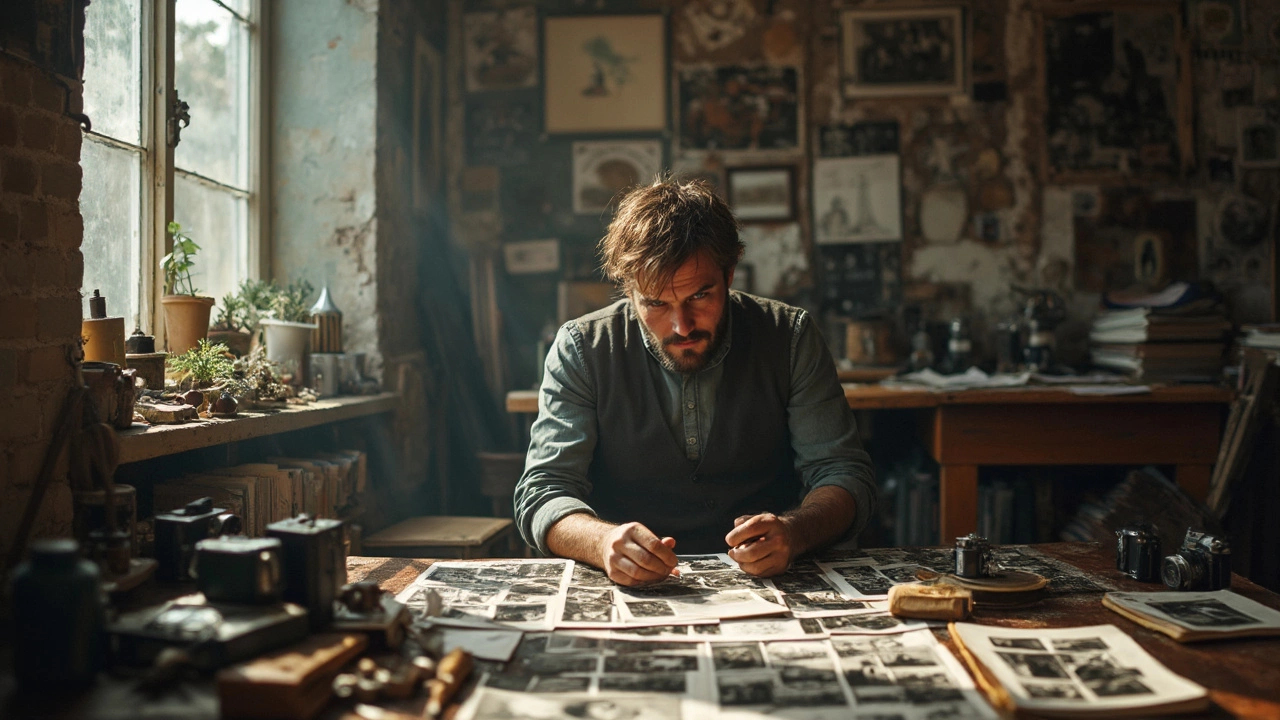
Techniques and Tips for Capturing Fine Art
Nailing fine art photography can feel like a challenge, but with the right mindset and techniques, you'll be crafting captivating images in no time.
1. Develop a Unique Vision
Your perspective is what sets your work apart. Spend time defining your style. What do you want to communicate through your photos? Remember, it's not about the subject—it’s how you see it.
2. Experiment with Composition
Play around with angles, lines, and framing. The rule of thirds is a good starting point, but don't be afraid to break the norms. Sometimes, an unconventional perspective brings the piece to life.
3. Master Light and Shadow
Lighting can transform a photo from bland to breathtaking. Experiment with different times of day, artificial light, or even shadows to boost emotions in your photography.
4. Post-Processing Techniques
Post-processing is your playground. Tools like Photoshop or Lightroom can help you enhance the mood or bring out elements you want to emphasize. Just be careful not to over-process, unless that's your hallmark.
- B&W Conversions: Stripping color can focus attention on form, texture, and emotion.
- Selective Color: Highlight specific parts of the photo to draw the viewer's eye.
- Adjust Contrast: Use it to add depth and drama.
5. Keep Evolving
Your style will change as you grow. Stay open to new ideas and continue experimenting. Following trends is fine, but adding your spin keeps your work fresh and genuine.
6. Tell a Story
Regardless of your subject, aim to tell a story or evoke a feeling. Ask yourself what you want your audience to feel or question when they view your work.
Remember, there’s no one-size-fits-all approach in fine art photography. The key is to stay true to your vision while pushing boundaries—your own and your audience's.
Famous Fine Art Photographers
Diving into the world of fine art photography, it's impossible not to bump into some of the legendary figures who have transformed photography into an art form. These photographers haven't just taken pictures; they've made statements, told stories, and sparked imaginations.
Ansel Adams
Perhaps one of the most iconic names in both photography and the art world, Ansel Adams is celebrated for his breathtaking black-and-white landscapes of the American West. His work with the Zone System revolutionized exposure control, allowing for stunning contrasts. Adams didn't just capture the stark beauty of places like Yosemite; he advocated for environmental conservation, making his art a powerful tool for change.
Cindy Sherman
Known for her conceptual portraits, Cindy Sherman has used photography to challenge notions of identity and representation. Her work often sees her assuming different personas in front of her own lens, crafting narratives that provoke thought and occasionally discomfort. Sherman’s ability to merge self-portraiture with fine art photography has earned her a revered spot in the art community.
Man Ray
A key figure in the Dada and Surrealist movements, Man Ray brought an avant-garde approach to photography. He's hailed for inventing the photogram technique, which he called "rayographs." His experimental style pushed the boundaries of artistic expression, making him a staple name when discussing photo art.
Annie Leibovitz
Annie Leibovitz's work combines celebrity portraiture and artistic interpretation in a way few others have. Her images have graced countless magazine covers, yet they stand as fine art thanks to her unique ability to blend the personality of her subjects with creative setups and storytelling.
| Photographer | Claim to Fame | Signature Style |
|---|---|---|
| Ansel Adams | American West Landscapes | Black and White, High Contrast |
| Cindy Sherman | Conceptual Portraits | Self-portraits, Identity Exploration |
| Man Ray | Experimental Avant-garde | Photograms, Surrealism |
| Annie Leibovitz | Celebrity Portraits | Narrative, High Fashion |
These photographers show that fine art photography is as much about vision and storytelling as it is about technical skill. They continue to inspire newcomers to see the world not just as it is, but as it could be.
